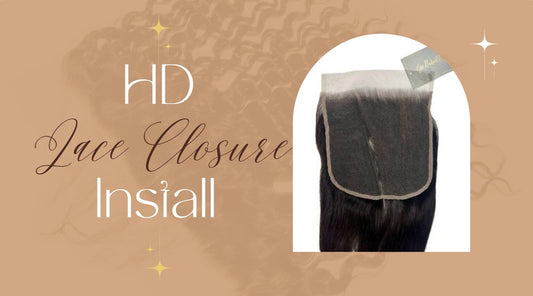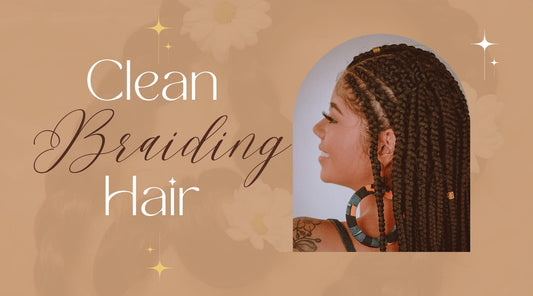
Plaited Hair vs. Hair Braids: What's the Difference?
Share
When it comes to hair terms, the words "plaits" and "braids" are often used interchangeably, which can be confusing for a lot of people.
While these terms are closely related, there are subtle differences in how they're used across different cultures and hairstyling contexts.
Understanding these distinctions not only expands your knowledge of various hair techniques but can also help you communicate more effectively with your stylist.
This guide breaks down everything you need to know about plaits and braids, their similarities and differences, and the popular styles you can achieve with each, and what Hair Extensions work best with each.

Plaits and Braids: Are They the Same Thing?
In everyday use, plaits and braids mean the same thing.
Both refer to the technique of weaving three or more strands of hair over and under each other to form a single, woven section.
In fact, in many parts of the world—especially in the U.K., Australia, and parts of Europe—the word "plait" is more common.
In the U.S., "braid" is used more often. So, if you're simply referring to the classic three-strand woven style, both words are correct and interchangeable.
However, depending on where you are and who you're talking to, these words can take on slightly different meanings.
In some cases, people use "braids" to refer to more complex or cultural styles, while "plaits" may suggest simpler or more casual versions.
This is where things can get a bit more nuanced.

What Is a Plait?
A plait is the traditional name for the standard three-strand braid. It's created by crossing the left and right strands over the center one, alternating sides as you go.
This is the style most of us first learn as kids.
Plaits can be worn in different forms, from a single plait down the back to two pigtail-style plaits, one on each side.
Of course, you also have accent plaits, which are small sections worked into a loose hairstyle.
Essentially, the term "plait" tends to be associated with a neater, tighter look that lies flat.
It's also usually done without adding any extra hair as you go along (unlike some types of braids).
In many English-speaking countries outside the U.S., you might hear someone say, "I wore my hair in a plait today," meaning a simple, no-fuss style.

What Is a Braid?
The word braid is broader and more commonly used in the U.S.
It includes the basic three-strand technique but also refers to a wide range of styles, including those with cultural significance and complex methods.
Here are some types of braids you may have heard of:
- French braid: For this type of braid, hair is gradually added in from both sides as you braid down the head.
- Dutch braid: This is similar to a French braid, but the strands are woven under instead of over, making the braid sit on top of the hair.
- Cornrows: This refers to tight, small braids woven closely to the scalp in rows, and it's common in African and African-American communities.
- Box braids: Individual braids are usually done with added synthetic hair for length and fullness.
- Fishtail braid: This is a two-strand braid made by overlapping small sections to create a detailed look.
In this context, "braiding" is often more than a simple hairstyle. It can be more unique by adding some Braiding Hair.
It can be part of one's identity, tradition, or personal style.
Cultural Differences in the Terms
Another thing that makes this topic a little tricky is the cultural context.
In places like the U.S. and Canada, "braids" are commonly associated with protective hairstyles used by people with textured or curly hair or Hair Closures.
These styles can take hours to complete and are often worn for weeks at a time. Think cornrows, box braids, or micro braids.
In contrast, the word "plait" might be used more casually or in reference to schoolgirl hairstyles, historical styles, or old-fashioned looks.
In older literature and media, you might read descriptions like "her hair was in a long, neat plait." So, while the technique is the same, how the words are used can depend on social or cultural background.
The Technical Differences
While the terms often overlap, there are subtle technical differences that some hair professionals recognize.
One distinction sometimes made is that traditional plaits involve weaving the hair downward away from the scalp, while some braided styles like cornrows or Dutch braids involve weaving the hair close to the scalp or in an "underhanded" technique where strands go under rather than over.
Plaits, on the other hand, typically maintain a consistent pattern throughout the length of the hair, usually with three evenly divided sections, while braids can incorporate varying numbers of strands, different thicknesses, added hair extensions like closures or Frontals, or multiple techniques within the same style.
 Popular Plait Styles
Popular Plait Styles
While plaits generally refer to the classic three-strand braid, there are several variations that fall under this category, including:
The Basic Three-Strand Plait
This is the quintessential plait that most people learn first: three equal sections of hair interwoven by crossing outside strands over the middle.
It creates a simple yet elegant look that works for casual and formal occasions alike.

The French Plait
The French plait (or French braid) is a variation where hair is added to each section as you work down the head.
Starting at the crown, small sections of hair are incorporated into the three main strands as you plait, creating a braid that sits flat against the head before extending down the back.

The Rope Plait
Unlike the traditional three-strand approach, a rope plait uses just two sections of hair that are twisted individually and then twisted together in the opposite direction.
The result looks like a plait but has a distinctive twisted rope appearance and can work easily with Layered Cuts.

Popular Braid Styles Beyond Traditional Plaits
The world of braids extends far beyond basic plaits.
In fact, it encompasses a wide variety of techniques from different cultures around the world:

Box Braids
Box braids are a protective style popular in Black hair culture, consisting of square-shaped hair divisions that are braided with extensions like Afro Kinky Bulk Hair extensions from the root to the tip.
Unlike simple plaits, box braids can last for weeks and offer versatile styling options.

Fishtail Braid
The fishtail braid creates an intricate, herringbone-like pattern using only two main sections of hair.
Small strands from the outside of each section are crossed over to the opposite section, which creates a more complex look than the traditional three-strand plait.

Dutch Braid
Sometimes called an "inverted French braid," the Dutch braid follows the same pattern as a French braid but crosses strands under the middle section rather than over, creating a braid that sits on top of rather than flat against the hair.

Cornrows
Cornrows are braids that are woven very close to the scalp, usually in straight rows.
This technique requires braiding underhand so the braid sits raised above the scalp, and this is what distinguishes it from a traditional plait.
Different Words, Same Beauty
In the end, whether you call it a plait or a braid may simply come down to regional terminology and personal preference.
Choose your style, grab your Hair Bundles, and shoot
The key is to understand the techniques behind different styles so you can communicate effectively with your stylist or master them yourself at home.



